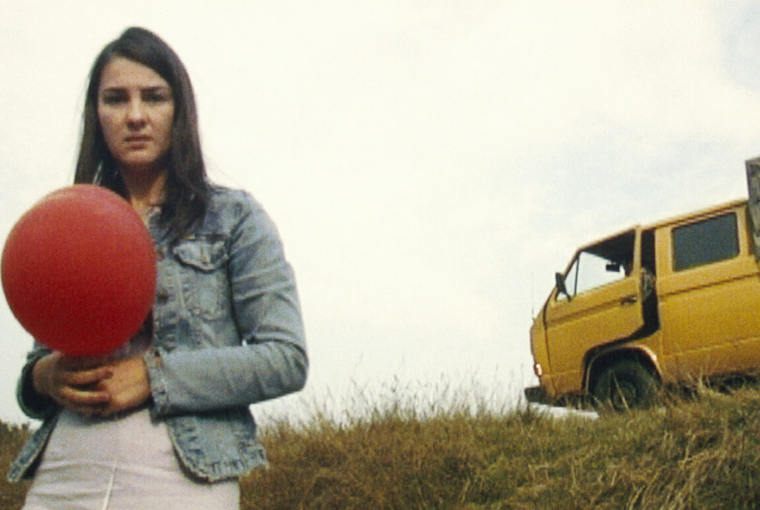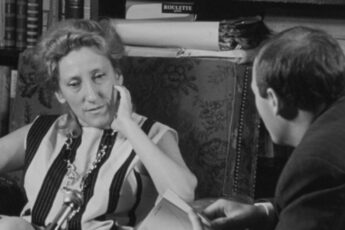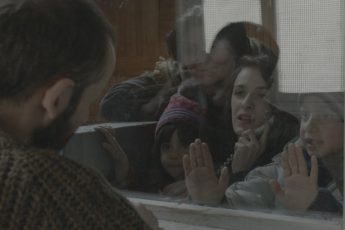Picnic Cinema
Adrian Sitaru’s Hooked (Pescuit sportiv, 2009)
Vol. 10 (October 2011) by Konstanty Kuzma
Adrian Sitaru’s debute feature Hooked takes place on a picnic trip (hence the French title for the film, Picnic). Mihai and his girlfriend Sweetie set out to the countryside on a weekend to get things going in their relationship and take a rest from the city (Bucharest, it is). Although they keep poking at each other throughout the ride, there are moments of laughing at jokes and holding hands. The film is shot entirely from the Point of View perspectives of its characters, and so the view constantly switches from one side of the car to the other, making the presence of the camera rather pushy (as new characters are introduced into the story, the perspective is further dispersed). About 15 minutes into the film, Sitaru breaks with the tardy rhytm when the couple drives over a prostitute. While Mihai wants to take the young woman to the hospital, Sweetie refuses, and succeeds in convincing Mihai to dump the corpse in the forest. As it turns out, Sweetie is married (degrading her from girlfriend to lover), and the incident, even if acknowledged as an accident, would reveal their affair. As the couple searches for a place to dump the body, it turns out that the girl was not killed in the accident. Instead, she steps into the action herself. She joins the picnic, and, slowly grasping the constellation she finds herself in, starts manipulating the two lovers…
While the provocative camera work counters the realist touch of the New Wave aesthetics, there are notable connections to Romanian reality as we know it from films of Radu Muntean & Co (Hooked, after all, is no less set in Romania than Tuesday after Christmas). The relationship in Hooked is about as unharmonious as a relationship gets, which is partly due to the fact that Mihai and Sweetie are lovers, not husband and wife. Even if Sitaru never fully informs us about the nature of his protagonists, obviously it is not merely sex they are looking for (or, if that is all they were looking for, they caused a well-known by-product, namely emotions, as ambiguous as they may be). Although this constellation seems efficient, it is understandable that Sitaru wanted to mix things up and make his story a little more interesting. However, it is unfortunate that the insertion of Ana (the prostitute) into the story comes off a little forced, and more importantly insufficient for overcoming the staleness of the initial conflict. What is worse is the fact that her appearance further complicates the already problematic POV style of the film. On the one hand, Hooked attempts to reflect the view of all characters involved in the story, but, on the other hand, the film is clearly guided by an ambiguous character psychology. If there are no obvious tensions between the characters except for sexual desires (and thus, no conflicting motives), this apparent multitude of perspectives only disrupts the attachment of the audience to the film for no reason. Instead of differentiating the conflict, it strips the film of all its subtlety. The constant shifts in perspective ultimately give the audience a complete overview over the actions and intentions of the characters. A tool employed in virtue of subjectivity thus becomes a guarantor for objectivity. It is hardly surprising, then, that Sitaru’s visual stubbornness also influenced the acting of the principal trio, who, although delivering an over-all solid performance, are seemingly unsettled by this technical prioritization.
Many critics compared Hooked to Polanski’s Knife in the Water due to the triangle constellation and the sexual tension that seems to reign over both films (only that Sitaru reverses the gender constellation). Indeed, even with regard to the setting by the water, one could understand Hooked as something of a tribute to Polanski’s classic. But where Knife in the Water develops an urgent conflict between the two men competing over Andrzej’s wife, Hooked gets lost in a directionless flow of impulses where anything goes. This is not to say that Knife in the Water solely depends on a man-to-man rivalry, the very contrary is the case. But by isolating the different layers of his story as quasi-sub-plots, Polanski preserves a visible direction in his story without making the film predictable, whereas Sitaru’s plot remains somewhat undeveloped. While one could interpret the ambiguity in Hooked as a creative decision resembling the over-all atmosphere of the film, even the ueber-present style fails to bring it all together. And where the presence of the body in Knife in the Water sets discrete nuances – almost in need of reminding the audience of its presence -, Sitaru demonstratively exposes actress Maria Dinulescu’s breasts throughout the film to enforce sexual tension. An obvious attempt to induce an acuteness that the film never reaches.




Leave a Comment